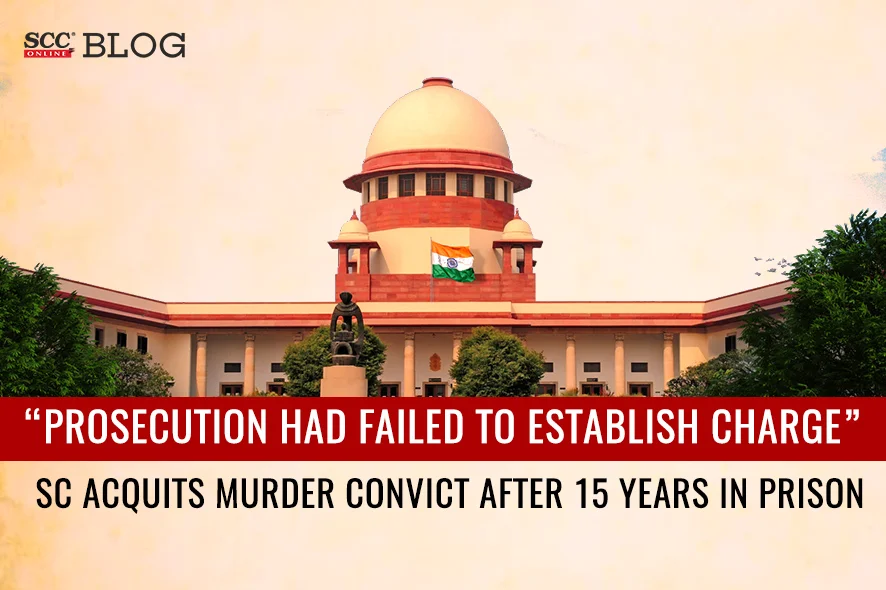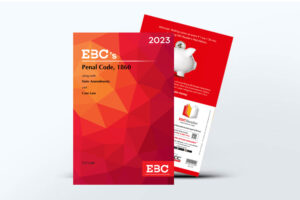Supreme Court: In an appeal against the judgment and order of Chhattisgarh High Court, whereby the conviction under Section 302 of the Penal Code, 1860 (‘IPC’) and the sentence to undergo life imprisonment along with fine of Rs.5,000/- passed by the Additional Sessions Judge has been affirmed. the division bench of Vikram Nath* and Ahsanuddin Amanullah, JJ. while acquitting the convict, said that it is possible that the deceased was heavily drunk and had fallen on a sharp-edged object because of which he had received the injury. Thus, the prosecution had failed to establish the charge.
Background:
As per the informant, the incident happened about 4 months back when the deceased shouted that the convict had assaulted him. He rushed to the place of occurrence and saw the convict running away and the Tabbal was lying there. The deceased had already fallen unconscious by that time with a deep cut at the neck from which blood was flowing. As per the informant, there was no enmity between the deceased and the convict. The convict is in jail and has already undergone almost 15 years’ incarceration.
The Trial Court had held that the prosecution had proved beyond reasonable doubt that it was the convict who had committed the crime and accordingly convicted him for culpable homicide amounting to murder under Section 302 IPC and awarded him sentence to undergo life imprisonment along with fine. The said conviction has been affirmed by the High Court. Hence, this appeal.
The convict contended that there was no direct evidence of the commission of crime. The case was based on circumstantial and hearsay evidence. No motive had been set out by the prosecution either in the First Information Report or the statements recorded during the investigation or even in the evidence led during trial. Per contra, the State submitted that the prosecution had fully proved the commission of crime by cogent material.
Analysis:
The Court answered the question, whether any of the eyewitnesses had seen the occurrence of the convict assaulting the deceased in negative, and noted that according to the informant, he was the first person to arrive at the site along with his wife, upon hearing the cry for help from the deceased that the convict was assaulting him with a tabbal. When he reached the site, he saw that the deceased was lying on the road and the convict was moving towards his house on a cycle along with tabbal. This is the FIR version.
Further, the court noted that in his deposition, the informant has stated that when he rushed to the place of occurrence, he saw the convict running away and the tabbal was lying there. The deceased had fallen unconscious and there was a deep cut on his neck with blood flowing from the injury. Thus, the only evidence of informant was that the convict was running away from the place of occurrence when he reached there. He has himself stated that the deceased was already unconscious and was not in a condition to speak.
The Court further said that there is one more aspect to be considered that whether the cry given by the deceased could have been made as stated, as normally in villages nobody takes the name of elders and especially their uncles. Further, whether after receiving the said injury the deceased could have shouted, and if he had shouted before being assaulted then the situation would have been different. Thus, the Court viewed that the prosecution story as set out does not appear to be a probable story and the supporting evidence led during trial of the witnesses of fact also does not inspire confidence. Rather there are material contradictions.
The Court further said that the defence has been successful in making a serious dent in the prosecution case, as no motive has been set up by the prosecution as to why the convict would assault the deceased, as all the witnesses who are family members have stated that there was no enmity between the convict and the deceased.
The Bench said that once there is no eyewitness of the incident, the prosecution will have to establish a motive for the commission of the crime because in a case of direct evidence, motive may not have a major role. If there is no motive proved and there are direct eyewitnesses, motive may lose its importance, but in the present case due to absence of eyewitness, motive has an important role to play.
Further, the Court noted that the defence during the cross-examination has elicited that the Sarpanch had grouse against the convict because he had made a complaint regarding misappropriation of government funds and of committing major illegality in distribution of essential commodities. On the said complaint an enquiry was made where the Sarpanch had to tender public apology.
The Court also noted that in the night itself after the deceased was taken to the hospital, a meeting was called by the Sarpanch, where the convict was forced to confess. Thus, the Court said that it is possible that on account of the influence of the Sarpanch that the convict has been falsely implicated.
The defence suggested that the weapon of assault recovered could not have caused the injury in view of the size of the weapon of assault and the size of the injury which had no match. The deceased was heavily drunk and had fallen on a sharp-edged object because of which he had received the injury. The Court said that this appears probable for two reasons:
Firstly, that the witness had stated that there was sufficient alcohol in the body of the deceased and secondly that the weapon of assault produced by the prosecution did not match with the injury. Thus, the injury could have been caused by the deceased slipping and falling on a sharp object.
The Court said that it is evident that the testimony of the informant was not reliable and could not have formed the basis of conviction. Apparently, he was influenced by Sarpanch whose active participation in the proceedings subsequent to the incident cannot be ruled out. The medical evidence did not support the prosecution case as the weapon of assault could not have caused injury on the deceased as noticed in the post-mortem report. There was no motive as to why the convict would commit the murder of an acquaintance and a friend for no reason. The defence version that the deceased was under the influence of alcohol and could have tripped and fallen on a sharp object resulting in the ante-mortem injury reported in the post-mortem was quite possible. The same is clearly borne out from the record. The explanation for the delayed lodging of the FIR is not satisfactory. Thus, the prosecution had failed to establish the charge.
Therefore, the Bench set aside the conviction and sentence of the convict.
[Shatrughan v. State of Chhattisgarh, 2023 SCC OnLine SC 858, decided on 20-07-2023]
*Judgment Authored by: Justice Vikram Nath








